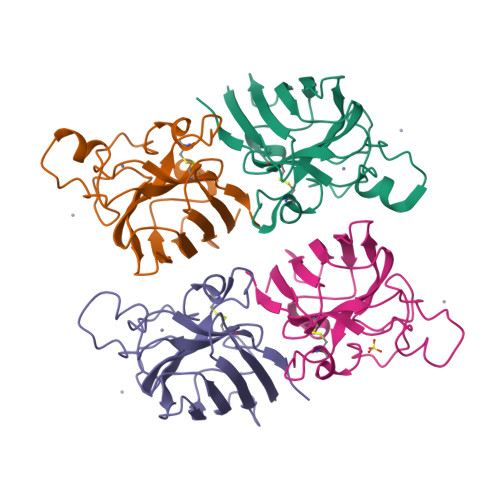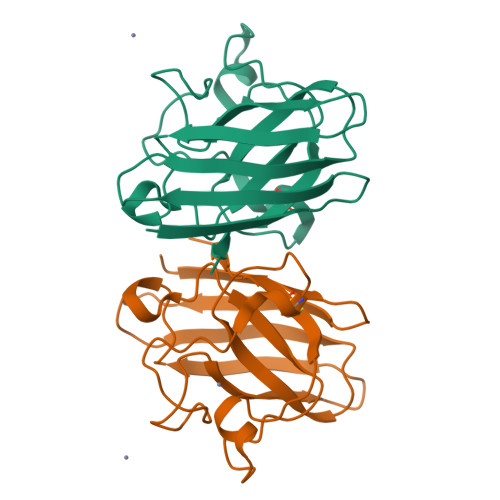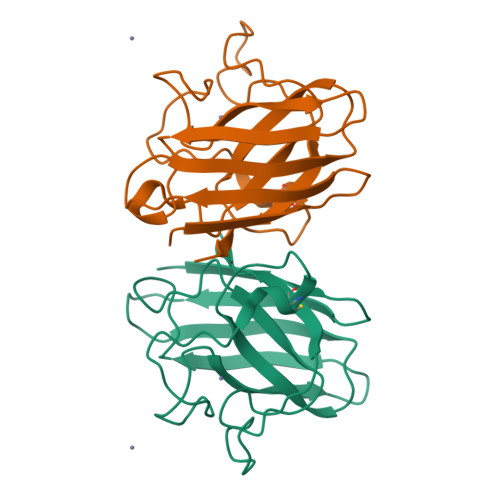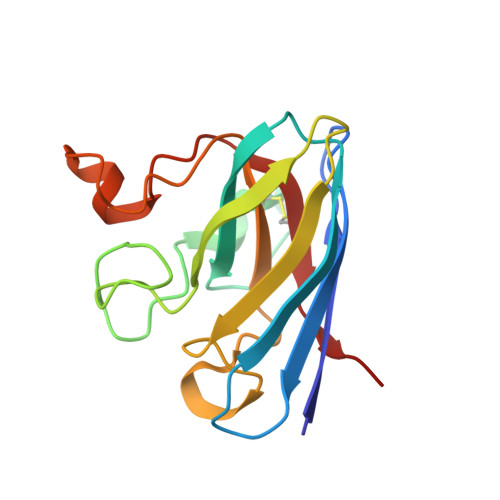Disease-associated mutations at copper ligand histidine residues of superoxide dismutase 1 diminish the binding of copper and compromise dimer stability
Wang, J., Caruano-Yzermans, A., Rodriguez, A., Scheurmann, J.P., Slunt, H.H., Cao, X., Gitlin, J., Hart, P.J., Borchelt, D.R.(2007) J Biological Chem 282: 345-352
- PubMed: 17092942
- DOI: https://doi.org/10.1074/jbc.M604503200
- Primary Citation of Related Structures:
2NNX - PubMed Abstract:
A subset of superoxide dismutase 1 (Cu/Zn-SOD1) mutants that cause familial amyotrophic lateral sclerosis (FALS) have heightened reactivity with (-)ONOO and H(2)O(2) in vitro. This reactivity requires a copper ion bound in the active site and is a suggested mechanism of motor neuron injury. However, we have found that transgenic mice that express SOD1-H46R/H48Q, which combines natural FALS mutations at ligands for copper and which is inactive, develop motor neuron disease. Using a direct radioactive copper incorporation assay in transfected cells and the established tools of single crystal x-ray diffraction, we now demonstrate that this variant does not stably bind copper. We find that single mutations at copper ligands, including H46R, H48Q, and a quadruple mutant H46R/H48Q/H63G/H120G, also diminish the binding of radioactive copper. Further, using native polyacrylamide gel electrophoresis and a yeast two-hybrid assay, the binding of copper was found to be related to the formation of the stable dimeric enzyme. Collectively, our data demonstrate a relationship between copper and assembly of SOD1 into stable dimers and also define disease-causing SOD1 mutants that are unlikely to robustly produce toxic radicals via copper-mediated chemistry.
Organizational Affiliation:
Department of Pathology, Johns Hopkins University, Baltimore, Maryland 21205, USA.



















